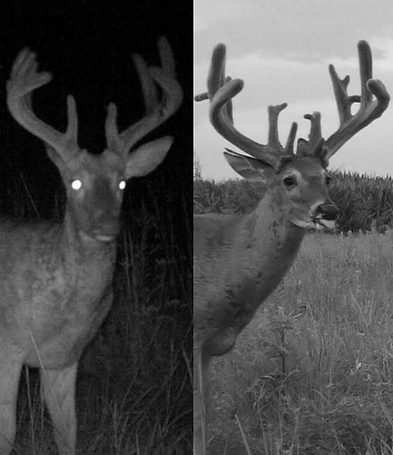Acerca de

ANTLER GROWTH
ANTLER GROWTH
Antler growth begins a week or so after the previous set of antler has “dropped.” There are two pedicles on a buck’s head that the new antlers will begin growing from. Antler growth depends on an individual deer’s access to quality nutrition, age, and genetics. Maximizing nutrition can play a key role in antler development. Throughout late spring and summer, antlers are equipped with a very rich blood supply, and are covered with a hair like membrane commonly known as velvet.
Velvet antlers are high in water and low in dry matter content. The composition of the dry matter portion during this stage is 80 percent protein and 20 percent ash (primarily calcium and phosphorus). During this time mineral consumption, high protein feed, along with native browse will benefit your bucks significantly. Antler growth starts to slow in August and the mobilization of minerals begins to harden the antlers. Bucks can actually go through a short term osteoporosis as minerals are pulled from the skeletal system to supply the antlers. There can be an increased consumption of mineral supplement at this time to help replenish the body.
By September most velvet has hardened and the buck will rub on trees and other vegetation to help get it off and reveal his new headgear. Now the dry matter content of the hard antlers is 60 percent ash and 40 percent protein. From late December to early March is when most bucks will drop their antlers. Then the process starts all over again.
GROWTH EXAMPLES
Below are some examples of the growth you can achieve in just one year if you allow your deer to get some age on them and provide them with the proper nutrition to maximize their potential.

"SOUTH SIDE BOB"

"HOLYFIELD"

"SPLIT G2"
